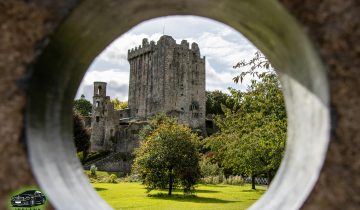Nestled in the heart of Ireland’s Ancient East, the Boyne Valley in County Meath is a landscape steeped in mystery, where ancient monuments, Celtic legends, and hidden stories whisper through the rolling hills. Often overshadowed by Ireland’s more famous coastal attractions, this region is a treasure trove of history that stretches back over 5,000 years—older than Stonehenge or the Pyramids of Giza. From the world-renowned passage tombs of Newgrange to lesser-known sites like the Hill of Slane, the Boyne Valley offers a journey through time that’s both profound and intimate. For those seeking to unravel its secrets, an exclusive private tour of Ireland provides the perfect way to explore, with expert guides who can reveal the hidden gems and local lore that make this area so enchanting. Let’s dive into the mysterious history of the Boyne Valley and discover the stories that await.
Newgrange: A Neolithic Wonder with Celestial Secrets
The Boyne Valley’s crown jewel is Newgrange, a massive passage tomb dating back to 3200 BCE, making it one of the oldest known structures in the world. This UNESCO World Heritage Site, part of the Brú na Bóinne complex, is a marvel of Neolithic engineering: a circular mound, 85 meters in diameter, constructed with 200,000 tons of stone and earth, topped with a corbelled roof that has remained watertight for millennia. Inside, a 19-meter-long passage leads to a cruciform chamber, where the cremated remains of the dead were once placed, likely as part of ancestor worship.
What makes Newgrange truly mysterious is its alignment with the winter solstice. Each year, on December 21st, the rising sun shines through a narrow “roof box” above the entrance, illuminating the chamber in a golden glow for exactly 17 minutes—a phenomenon that still draws thousands of visitors hoping to witness it. Archaeologists believe this alignment was no accident; the builders, known as the Boyne Culture, had a sophisticated understanding of astronomy, using the solstice to mark the rebirth of the year and honor their ancestors. The tomb’s exterior is adorned with intricate spiral carvings, some of the earliest art in Ireland, which some locals believe represent the cycle of life, death, and rebirth—or even maps of the stars.
But there’s a hidden story that only a local guide on an exclusive private tour of Ireland might share. Nearby, on the banks of the River Boyne, there’s a small, unmarked standing stone known as the “Hag’s Chair.” Local legend claims it was a seat for the Cailleach, a mythical hag who shaped Ireland’s landscapes. Some say that if you sit on the stone at midnight under a full moon, you’ll hear the whispers of the ancient dead—a tale that adds a shiver of magic to Newgrange’s ancient aura. A private guide can also time your visit to avoid the midday crowds, perhaps taking you to a nearby hilltop for a panoramic view of the Brú na Bóinne complex, where you can see Newgrange alongside its sister tombs, Knowth and Dowth, in serene solitude.
The Hill of Tara: The Seat of Ireland’s High Kings
Just a short drive from Newgrange lies the Hill of Tara, the ancient ceremonial and political heart of Ireland. For centuries, Tara was the seat of the High Kings of Ireland, where they were crowned amidst elaborate rituals. The site, dating back to 2500 BCE, is a sprawling complex of earthworks, including the Mound of the Hostages—a passage tomb—and the Lia Fáil, or Stone of Destiny, which is said to roar when touched by the rightful king. Archaeological evidence suggests Tara was a place of immense spiritual significance, with over 30 visible monuments, including ring forts, barrows, and sacred enclosures.
One of Tara’s most intriguing mysteries is its connection to the Otherworld, the realm of the Tuatha Dé Danann—Celtic deities who, according to myth, retreated underground after humans arrived in Ireland. The Mound of the Hostages is believed to be a portal to this Otherworld, and local folklore tells of fairy music heard on misty mornings, luring unwary travelers into the mound. In the 1950s, a farmer claimed to have seen a procession of ghostly figures on the hill, dressed in ancient garb, vanishing into the mound at dawn—a story that still circulates in nearby villages.
A lesser-known spot at Tara, often pointed out by guides on exclusive private tours of Ireland, is the “Banqueting Hall,” a long, rectangular earthwork where ancient feasts were held. While it’s not much to look at today, a local guide might share a secret: if you walk its length at sunrise, you can sometimes catch a glimpse of a shadow that locals call the “King’s Echo,” a silhouette of a crowned figure said to be the spirit of a High King. It’s the kind of detail that brings Tara’s history to life, and a private tour gives you the time and space to soak in the site’s mystical atmosphere, perhaps with a stop at a nearby traditional pub in Dunshaughlin, where the bartender might regale you with more Tara tales over a pint.
The Hill of Slane: Where St. Patrick Lit His Paschal Fire
Further north in the Boyne Valley, the Hill of Slane looms over the landscape, its history tied to one of Ireland’s most pivotal moments. In 433 CE, St. Patrick is said to have lit a Paschal fire on this hill, defying the High King Laoire at Tara, who had forbidden any fires during the pagan festival of Bealtaine. Patrick’s fire, symbolizing the arrival of Christianity, burned brightly, and legend has it that Laoire, instead of punishing him, was so impressed by Patrick’s courage that he allowed him to continue his mission. This moment marked a turning point in Ireland’s religious history, blending Christian and pagan traditions in a way that still shapes the country today.
The hill itself has older roots, with evidence of a Bronze Age settlement and a 5th-century monastery founded by St. Erc, one of Patrick’s converts. The ruins of a 16th-century friary and a tall bell tower still stand, offering sweeping views of the Boyne Valley. But there’s a hidden secret that locals cherish: a small, unmarked well at the base of the hill, known as St. Patrick’s Well, where the saint is said to have baptized his first converts. The well is surrounded by ancient trees, and some locals claim that drinking its water on Easter Sunday brings good luck—a tradition that’s been quietly upheld for generations.
An exclusive private tour of Ireland can enhance your visit to the Hill of Slane with these insider details. Your guide might take you to the well at dawn, when the light filters through the trees, creating a serene atmosphere, and share stories of local families who still visit the well for blessings. They could also point out a hidden path that leads to a nearby ring fort, believed to predate Patrick’s time, where you can feel the layers of history beneath your feet. With a private tour, you’ll have the flexibility to linger, soaking in the hill’s spiritual energy without the rush of a crowded bus schedule.
Dowth: The Forgotten Tomb with a Darker Tale
While Newgrange and Knowth often steal the spotlight, Dowth—the third major tomb in the Brú na Bóinne complex—offers a quieter, more mysterious experience. Dating to around 2500 BCE, Dowth is smaller than its siblings but no less intriguing. Its name, derived from the Irish word dubh meaning “dark,” hints at its shadowy reputation. Unlike Newgrange, Dowth has no solstice alignment, but it does have two passage chambers, one of which features a rare cruciform layout similar to Newgrange’s.
Dowth’s darker history comes from a local legend about its creation. The story goes that a king, seeking to halt the sun in the sky to complete the tomb in a single day, enlisted his sister, a sorceress, to cast a spell. She succeeded, but the king’s lust for her led to a forbidden act, breaking the spell. The sun moved again, and the workers abandoned the site, leaving Dowth unfinished. Locals call it the “Fairy Mound of Darkness,” and some believe it’s a portal to the Otherworld, guarded by mischievous spirits. In the 19th century, a farmer digging at the site claimed to have found a hidden chamber filled with strange, glowing stones, but it was never rediscovered—a mystery that still intrigues archaeologists.
A private guide on an exclusive private tour of Ireland can bring Dowth’s story to life with these local tales. They might also share a hidden gem: a nearby bend in the River Boyne where otters can often be spotted at dusk, a peaceful spot to reflect on Dowth’s eerie history. With fewer visitors than Newgrange, Dowth offers a sense of solitude, and a private tour ensures you can explore at your own pace, perhaps tracing the ancient carvings on the tomb’s stones with your fingertips.
Why an Exclusive Private Tour Unlocks the Boyne Valley’s Mysteries
The Boyne Valley is a place where history and myth intertwine, where every hill and stone holds a story waiting to be told. From the celestial precision of Newgrange to the royal legacy of Tara, the spiritual turning point at Slane, and the shadowy secrets of Dowth, this region offers a journey through Ireland’s ancient soul. An exclusive private tour of Ireland transforms that journey into something truly special, with a guide who can weave together historical facts, local legends, and hidden spots that most tourists miss.
Your private guide can tailor the experience to your interests—perhaps focusing on the archaeological details of Brú na Bóinne or the spiritual significance of Tara and Slane. They’ll navigate the quiet country roads, freeing you to soak in the landscape, and share insider knowledge, like the best time to visit Newgrange for a crowd-free experience (early morning, when the mist still clings to the valley) or the location of a traditional music session in a nearby village pub. With an exclusive private tour, you’ll have the time and space to connect with the Boyne Valley’s mysteries, feeling the weight of 5,000 years of history beneath your feet.
The Boyne Valley is a testament to Ireland’s enduring spirit, a place where the past feels alive in every whisper of the wind. For a journey that goes beyond the ordinary, an exclusive private tour of Ireland offers the key to unlocking its ancient secrets—stories and experiences that will linger in your memory long after you’ve left its sacred hills behind.





 No products in the cart.
No products in the cart.